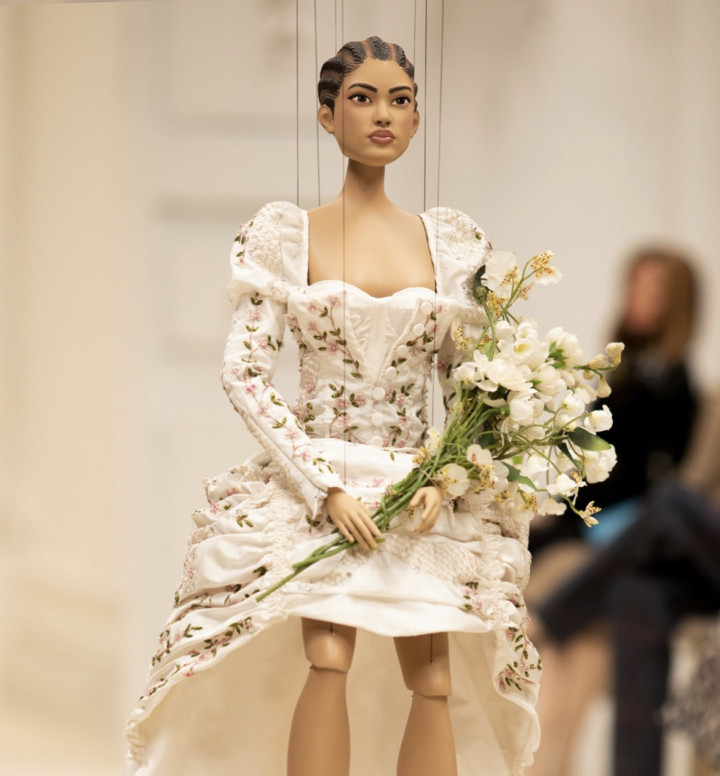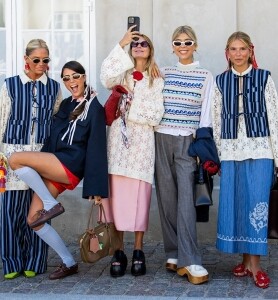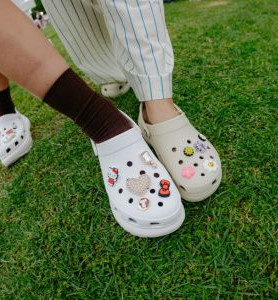Inside Miu Miu’s Spring/Summer 2026 ode to women’s work
In 2025, the question of who shapes women’s fashion—and why it’s so often men—continues to spark fierce debate. And while many shy away from the conversation for fear of being caught in the feminist crossfire, Miuccia Prada embraces the heat—in fact, she feeds the fire. From her early days in Milan to founding and fronting Miu Miu as Creative Director, Prada's relationship with feminism has always been complex, ambivalent, and deeply woven into both her personal history and design philosophy.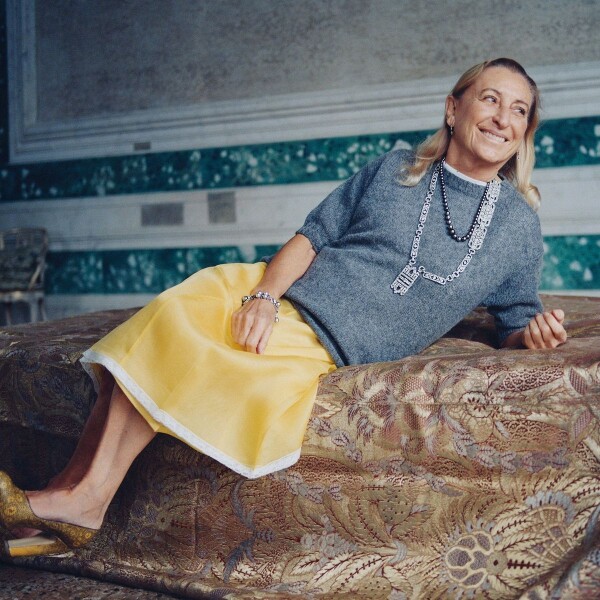
Image via Pinterest
Instead of blunt slogans or overt statements, Prada articulates feminism through the art of clever contradiction—those recurring motifs that both celebrate and question the complexities of womanhood. Think ugly-chic, anti-status aesthetics, and those unconventional pairings that have become shorthand for "Miu Miu-isms"—details die-hard fans have long adopted into their own wardrobes.
For Spring/Summer 2026, Prada expands this ethos with a collection that addresses and recognises the work of women—in her words, "their challenges, adversity, experience." The unlikely catalyst? The humble apron. Often overlooked, it signifies practicality, duty, and domestic uniformity. Echoed by Prada herself, "the apron [encapsulates] the real difficult life of women in history, from factories to home. It is afforded nobility and respect."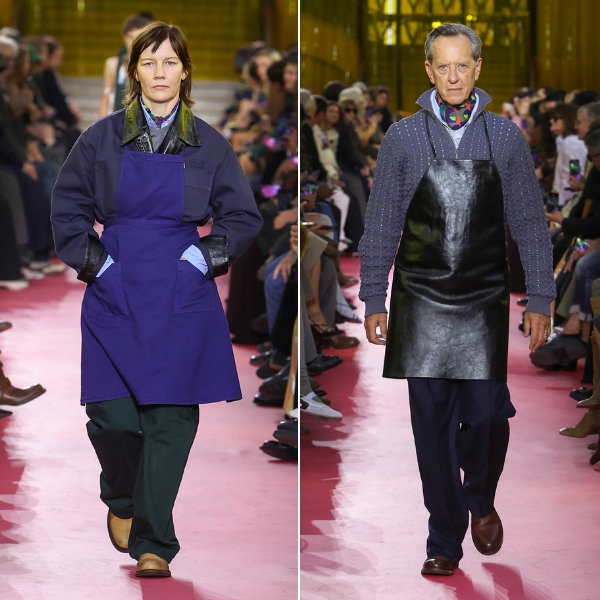
Our first glimpse came courtesy of Oscar-nominated actress Sandra Hüller, who opened the characteristically star-studded runway in a navy carpenter-style apron, cinched tightly over a leather-trimmed chore coat, with a quintessential Miu Miu knit-and-collar combination beneath. This sense of industrial beauty carried through the collection, featuring heavy-duty leathers and utilitarian silhouettes, with hands thrust in pockets, softened only by colourful silk cravats—a juxtaposition of resilience and refinement. Even Richard E. Grant made a surprise appearance in a leather, meat-work-esque apron, nodding to the universality of labour itself.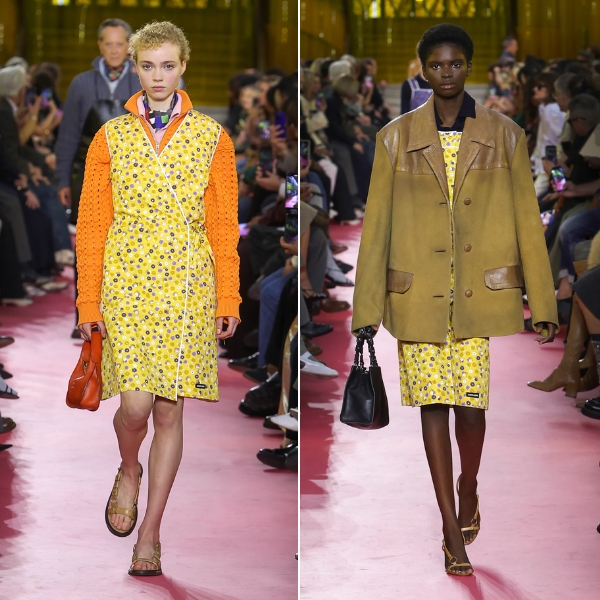
Staying true to the apron's many forms and functions, Miuccia soon leaned into the more decorative types often associated with homemakers of the 1950s or dinner ladies of the 1970s. Ditsy florals, frilled shoulders and asymmetric cuts were on the menu, layered over chunky quarter-zip knits or beneath robust leather jackets. Here, Prada's genius for styling shone: a strappy heel, belted-handle leather bag, or peekaboo bra transformed the overlooked into the aspirational, and dare we say, wearable?
Soon, aprons appeared in floral sheers, brocades, and crochet, layered over coloured bikinis or mini-dresses, each punctuated by the deft knot of a cravat at the neck. Then there were jacquard pinafores, embellished trims, and leather-edged finishes. 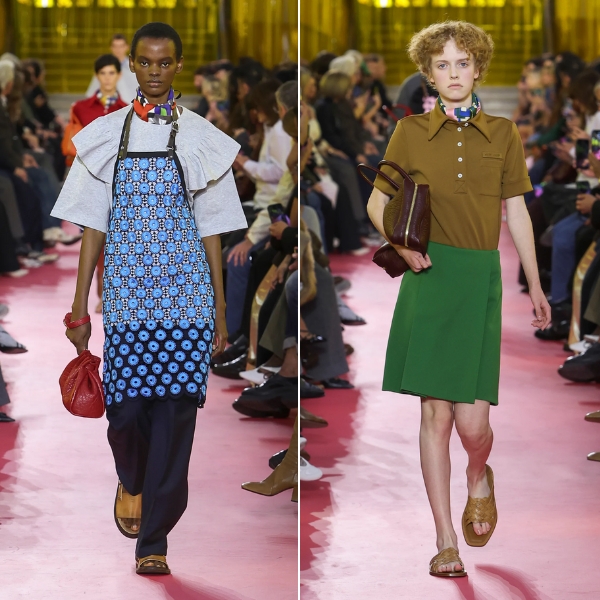
Alongside came the quiet signatures—sharp polos, modest skirts, and slouched trousers—the kind of workwear-meets-smart-casual staples that have cemented Miu Miu's modern uniform.
In lieu of a traditional front row, attendees, which included Emma Corrin, Joey King and Alexa Chung perched on cafeteria-style tables, only feeding the women at work mentality.
True to Miuccia's form, the message is clear: women's work has always been worthy of respect. In her hands, the everyday apron—once ordinary, even overlooked—becomes the season's most surprising symbol of strength.
Images via Miu Miu
MIUMIU.COM



